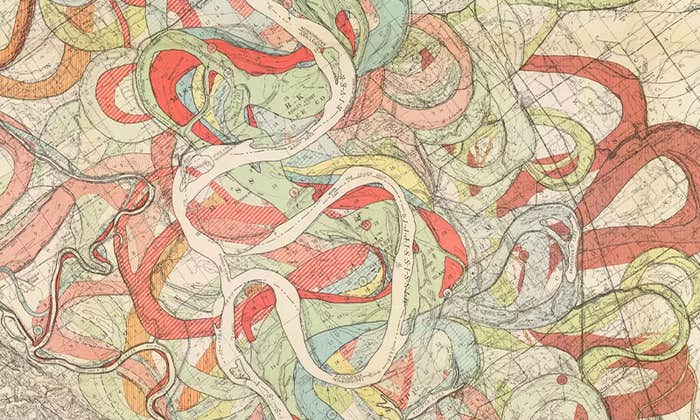One of science’s greatest feats is having described where we came from—not as individual people, or as a species, or even as a planet, but as stuff, the very material we’re made of. The Big Bang forged all of the basic particles of our lives—electrons and the quarks that make up protons and neutrons. The entire cosmos at that early time was creating matter out of the primordial chaos. But the powerful furnace cooled off as the Universe expanded, that initial round of cooking having produced no substantial numbers of atoms heavier than lithium, the third-lightest element. If the Universe had stopped creating there, it would have been pretty damn boring.
In a story so appealing and familiar that it’s practically bedtime comfort reading (for astronomers, anyway), dying stars supplied the rest of the matter in the cosmos. Supernovas and other powerful processes in the outer layers of dying stars welded small nuclei together, building heavier and heavier atomic nuclei. That observation inspired Carl Sagan’s famous line: We—and all the other objects of our daily lives—are star stuff.
But that romantic story isn’t quite complete. Certain heavy nuclei aren’t made in great quantities in dying stars, so the wide variety of elements we see must have come from some other place. But where? One likely possibility involves some of the strangest of the Universe’s denizens—neutron stars, which are the extremely dense remains of the explosions of stars more massive than the Sun. Collisions between these bizarre bodies result in extraordinarily bright explosions known as short-duration gamma-ray bursts (GRBs). Those big bangs provide the right ingredients and sufficient energy to make gold and other big atomic nuclei. GRBs were first discovered in the late 1960s, when satellites designed to spot illicit nuclear tests detected anomalous flares of gamma rays from deep space instead. (See the related post about other events that can be mistaken for nuclear tests.) Once the military declassified the discovery of gamma-ray bursts in 1973, astronomers set about trying to figure out what they were … a task that took more than 20 years.
A NASA simulation of two colliding neutron stars.
Gamma rays are inherently difficult to study in astronomy: they don’t pierce Earth’s atmosphere, and they don’t reflect off ordinary radiation mirrors.That difficulty (along with military secrecy) delayed the solution of the gamma-ray-burst mystery. In fact, whole conferences1 were devoted to debating the nature of GRBs, including the basic question of whether they were happening inside or outside of the Milky Way. The lack of good data began to change in the 1990s with the launch of the Burst and Transient Source Experiment (BaTSE). Scientists used BaTSE to determine that GRBs come in two basic varieties: short-duration GRBs, which explode and fade in about two seconds or less, and the long-duration variety that linger for several minutes2. Further evidence after about 1997 indicated that GRBs were indeed from outside the Milky Way, meaning they must involve a lot of energy to be so bright when viewed from so far away. These are some of the biggest bangs of all, still visible to us on Earth literally billions of years after they happen.
It eventually became clear that long-duration GRBs, which are brighter and more common, are extreme supernovas—explosions of very massive stars. Supernovas happen in star-forming regions: places where many high-mass stars go through their fast life cycle and explode. But short-duration GRBs, thought to be the prime sources of heavy elements, seemed to be different: A 2005 Nature paper by Derek Fox and colleagues pinpointed the location of a particular short-duration GRB using X-ray and radio observations, demonstrating clearly that it was not in a region of a galaxy likely to harbor a supernova. Scientists were already turning against the idea that supernovas cause short-duration GRBs and toward the neutron-star-collision hypothesis. That’s because of the brevity of the explosions: a regular star takes far longer than two seconds to blow up, with lots of nuclear collisions and other fun things happening in the process.
Collisions between neutron stars, by contrast, happen quite quickly, since each star’s mass is packed into a sphere roughly the diameter of an Earth city. (I speculate not on alien city sizes.) Instead of being made of atoms, they are a form of nuclear matter: neutrons and other particles jammed into a hot compact sphere. If supernovas are hydrogen bombs, then neutron-star collisions are particle colliders fit for gods. The amount of energy compressed and released in such short time is unrivaled in the cosmos.
As with the Relativistic Heavy Ion Collider, where lead nuclei are slammed into each other at a high fraction of the speed of light, neutron-star collisions result in a kind of melting and reforming, where the constituent nuclear particles jumble and recombine in interesting ways. One result in hshort-duration GRBs is the creation of new heavy atoms, which have lots of neutrons—something neutron stars obviously have in large quantities. Nearly all the gold in the cosmos, and all of the rare-earth metals like europium, were likely born in these collisions.
Last year, two groups observed another GRB and collected even more strong evidence in favor of the colliding-neutron-star hypothesis. Astronomers still need to solve some mysteries, including the question of how the products of GRBs can be incorporated into the raw material for new stars and planets. But it’s clear that these titantic collisions are among the Universe’s most important forges.
Footnotes:
(1) Debates in science are mostly interesting when data are scarce, so the details of conferences about GRBs from last century aren’t of much scientific value today, as historically important as they might be. A relative deposited about 100 pages of thoroughly outdated documents from these conferences on me when he cleared out his office. I “lost” them during my recent move from Virginia to Ohio. Sorry, Don!
(2) Short-duration GRBs are also known as “short-hard bursts” because they produce “hard” or high-energy gamma-rays. (Short-hard bursts are often abbreviated as SHBs, which I like to pronounce “shub” in my head. I blame Neal Stephenson.)
Matthew Francis is a physicist, science writer, public speaker, educator, and frequent wearer of jaunty hats. He’s currently writing a book on cosmology with the working title Back Roads, Dark Skies: A Cosmological Journey.



























